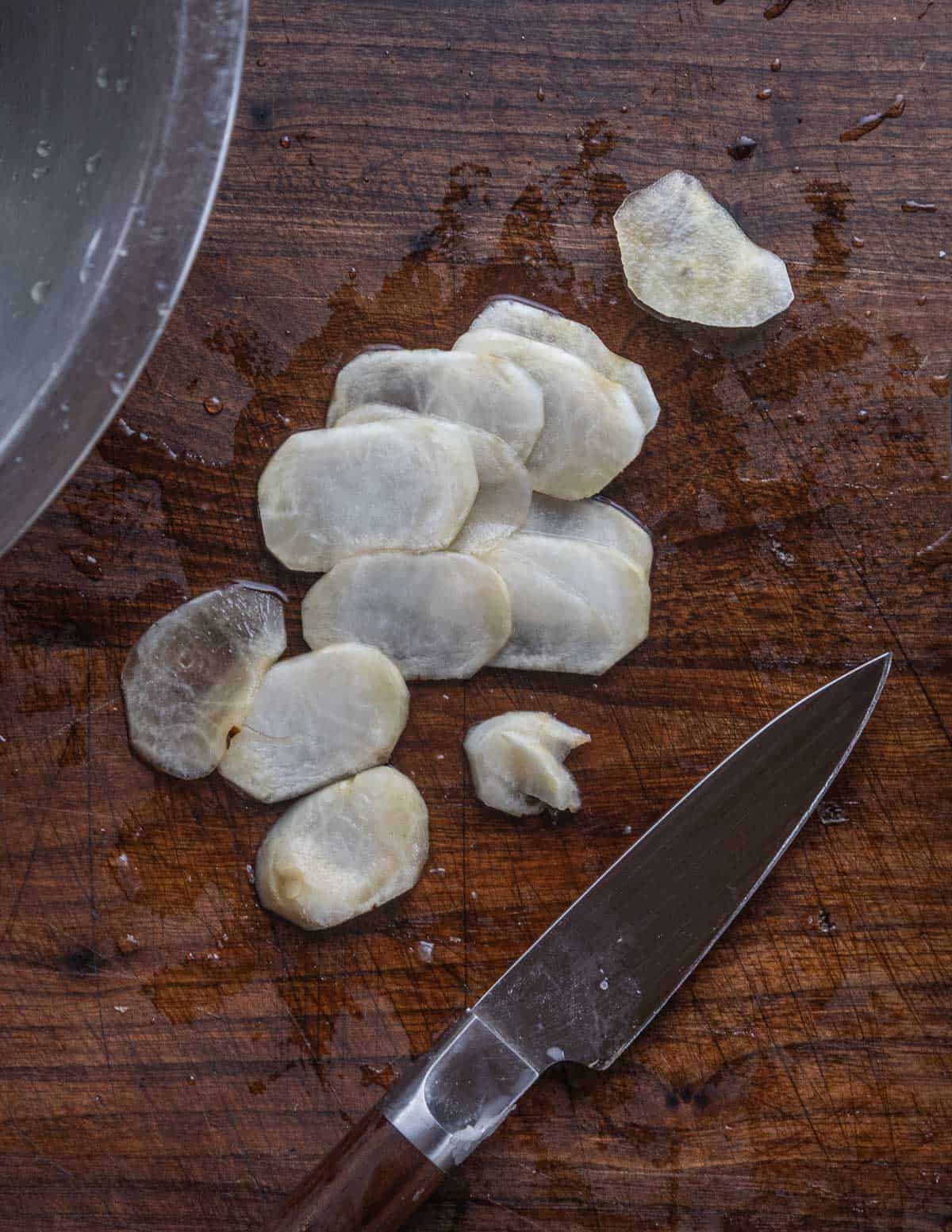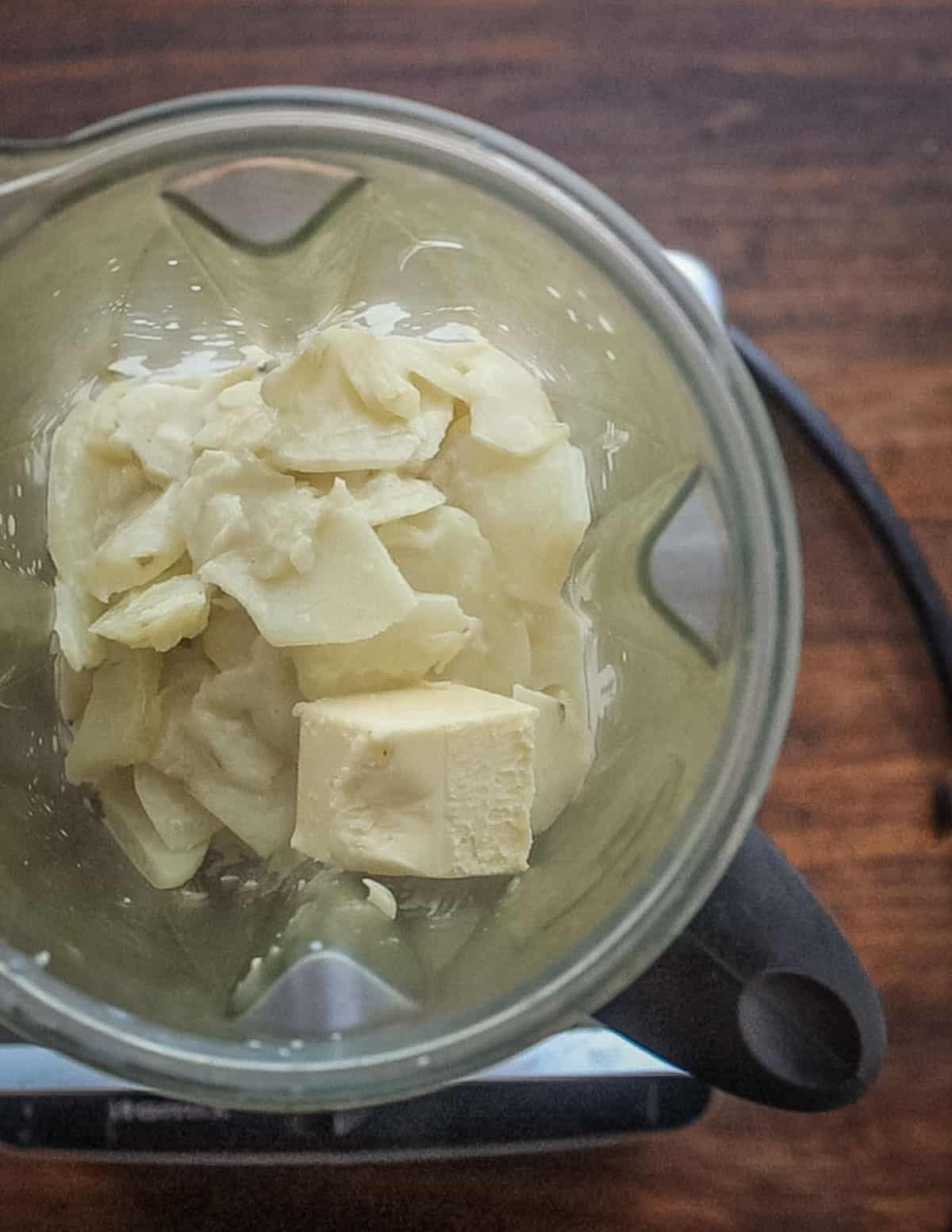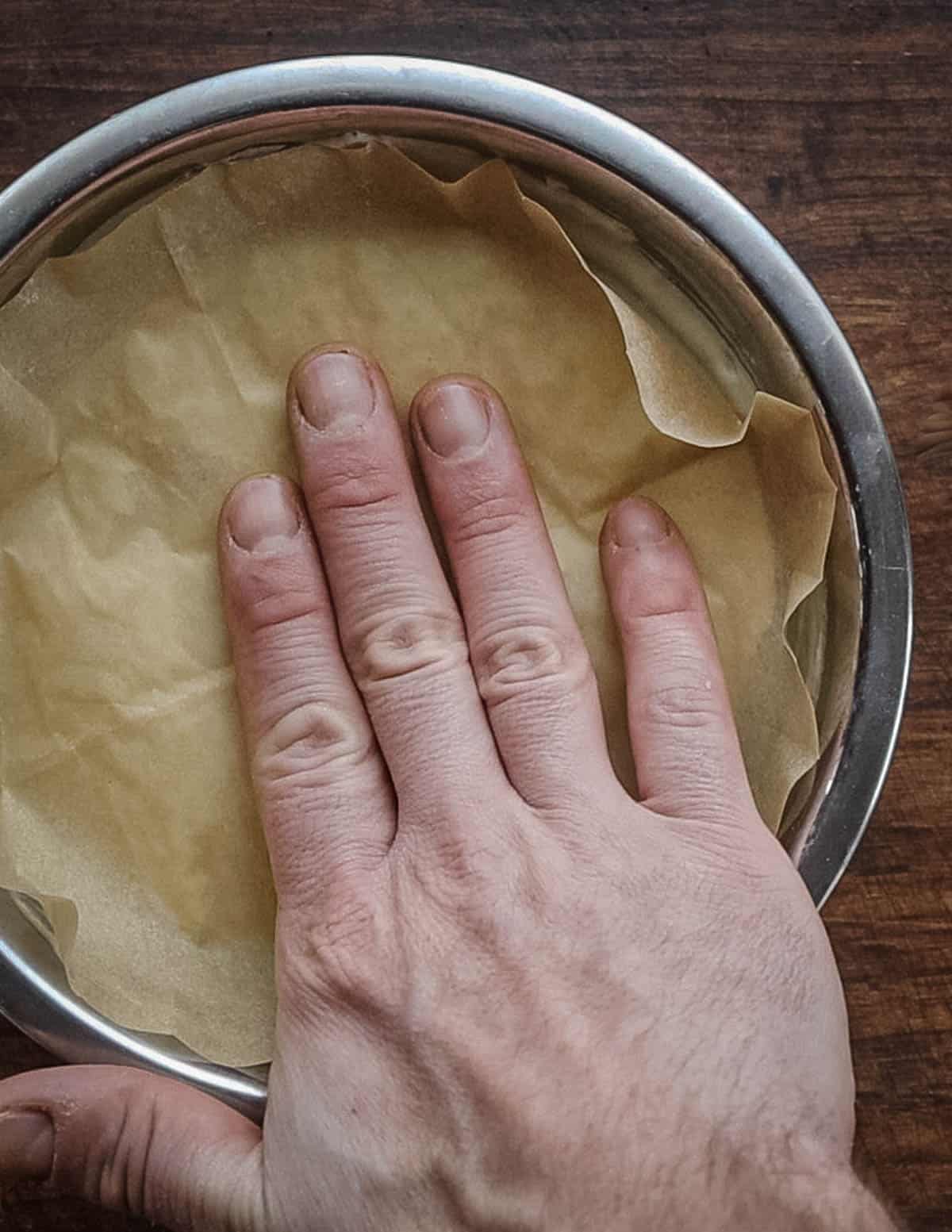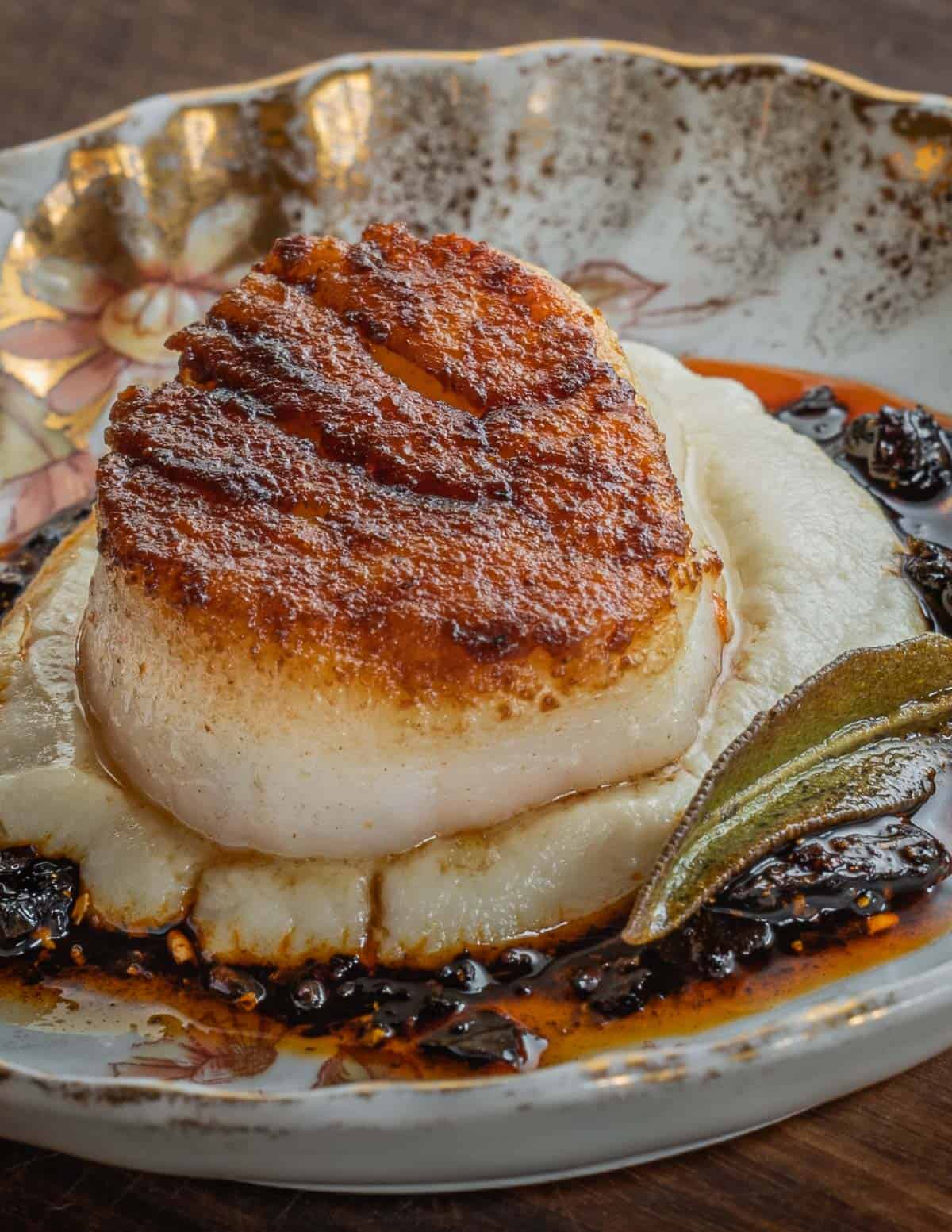Velvety smooth and creamy, with a subtle nutty flavor, Jerusalem artichoke or sunchoke puree is one of the most elegant ways I know how to serve these special tubers.

One of the most important things to consider is whether your tubers are wild or cultivated. Wild sunchokes are small and thin compared to cultivated ones and are best cooked whole.

If you grow sunchokes or bought some from a farmers market, they'll likely be large enough to peel and are what you want for this recipe. There's more waste with peeled tubers, but, as the plants are slightly invasive and tend to spread, having enough of them usually isn't a problem for sunchoke growers.

One of the most important things to consider is if you'll peel the Jerusalem artichokes or not. The tubers contain inulin, a sort of fiber that can be hard for some people to digest.
Jerusalem Artichoke Side Effects
Sunchokes / Jerusalem artichokes contain a lot of inulin, a starchy compound that can be difficult for people to digest. As with beans, people can experience gas. People that eat large amounts on an empty stomach or have a sensitivity to them can experience gastro intestinal distress and diarrhea, something I was reminded of this week as I ate my way through a 20 lb case of them.
At least for me, peeling helps a lot with digestibility. The struggle some have eating the tubers can vary drastically. I'd recommend people with delicate digestive systems be careful eating them, or sample small portions of well-cooked, peeled tubers with other foods as part of a meal to start.
How to Make Sunchoke Puree
There's two different ways to make it: peeled and unpeeled. For the smoothest texture, you'll want to use a highspeed blender but a food processor can work in a pinch.

First the sunchokes are peeled and put into a pot with cream.



Cover the sunchokes with a sheet of parchment to hold in heat and moisture. Cook them until the liquid has nearly evaporated.



For the smoothest, creamiest result, you'll want to use a highspeed blender here. A food processor just isn't the same and ends up with a gravely texture. But, if a food processor is all you have, don't let it stop you from making it.



How to Use It
It may look like mashed potatoes, but this is a rich side dish meant for serving in small amounts. Here's a few ideas:
- Serve warm under seared scallops, shrimp, or other seafood.
- Serve with braised meat to soak up the pan juices like mashed potatoes.
- It can be thinned with chicken stock to make a simple, rich soup.
- The puree pairs well with just about any meat.
- It can be used to season mashed potatoes too. Take the puree while it's warm, mix it into mashed potatoes instead of adding cream. You'll want about 3 cups / 4 lbs of cooked potatoes that have been riced.
- Sunchokes love herbs. Garnishing it with a drizzle of brown butter and sage or pesto is one of my favorites.

More Tubers
Jerusalem Artichoke or Sunchoke Puree
Equipment
- 1 Highspeed blender or food processor
- 1 3 quart saucepot
- 1 Cheesecloth optional
- 1 wooden spoon
Ingredients
- 2 lbs sunchokes
- 8 oz heavy cream
- 2 tablespoons unsalted butter
- ½ teaspoon kosher salt plus more to taste
- A few gratings of fresh nutmeg, to taste optional
Herb Bouquet
- 2 small sprigs of fresh thyme
- 2 fresh sage leaves
Instructions
- Tie the herbs in the cheesecloth and reserve.
- Trim the sunchokes and peel them.
- Thinly slice the sunchokes about ¼ inch thick.
- Put the sunchokes and cream in a sauce pot about 8 inches in diameter. Cover with a round of parchment paper and bring to a simmer.
- Put the herb bouquet in the bottom of the pot if using to ensure it infuses into the cream.
- Cook for 15-20 minutes, stirring occasionally, until the liquid is nearly absorbed and you can see the pan when a spatula stirs the mixture. Discard the herb bouquet, pressing the liquid out with a wooden spoon.
- Transfer the sunchokes to a highspeed blender or food processor, add the butter and salt and puree until smooth. Double check the seasoning for salt and pepper and adjust until it tastes good to you.
- The puree will keep in the fridge for 4-5 days. You can keep it in a warm oven covered with parchment before serving.
- You can serve the puree as a simple dollop on a plate, or it can be garnished with toasted nuts, fried sage or fresh cut chives.


AMA
I’m trying to keep up with some sunchokes in the garden so i have a heap of them on my hands for cooking…do you think this would freeze well? Or is there a version of this that might?
Alan Bergo
Yes it will freeze very well. You’ll want to heat and whisk it after thawing as there will be some separation. You can also run some warm (not hot) water on the edges of the container, pop out the whole frozen block and heat it with a splash of milk or water for a quick thaw. Makes a good soup base too.
Becky
We made this for the first time, and it was absolutely delicious! Happy to report no GI issues whatsoever!
Alan Bergo
Thanks Becky that's great.
Mike Moranz
You are correct sir. Gassy. I grew them and tried to eat different ways but finally realized they were not for me. Flavor was excellent. I ate them raw with salt but at the rate they "invaded", a few bites couldn't keep up with their spread. Very nice flower if one wanted to let their lawn go natural.
Alan Bergo
Hey Mike. I really did it to myself. I'd never had bad GI reactions before but this was like getting sick from sunchokes. My problem was that I ate them on an empty stomach, the next day I had a comparable amount with a variety of other foods and it was fine. My GI symptoms were pretty bad though.
KT
Did you try them cooked?
That usually makes things more digestible.
Or foods that cause [me] an allergic reaction, cooked won't.
Etc
Josie
I've made the version in the food processor and thought it was only ok kinda watery. I'd actually just dug a few and made the peeled version this morning and I might have to make it every year. The texture and flavor is so much better than if it's coarse. Wow.
Lenny Russo
As you must recall, Alan, we used lots and lots of sunchokes, also known as Jerusalem artichokes, at Heartland. They are the tuber from a type of sunflower. The Italian name for sunflower is gersole. The "g" is soft, and English speakes heard it pronounced as "Jerusalem" while the dried sunflowers reminded them of artichokes. Thus "Jerusalem artichoke" became an alternate name for the sunchoke. The fact that the tuber also has a taste reminiscent of artichokes didn't hurt the adoption of that misnomer.
Alan Bergo
Hey Boss. Oh of course. The first thing I think of is how much Chad didn't like them and said they tasted like silage. Such a cool plant. I ate some wild ones in Tuscany this year and they were really good and not at all sweet, which was surprising.